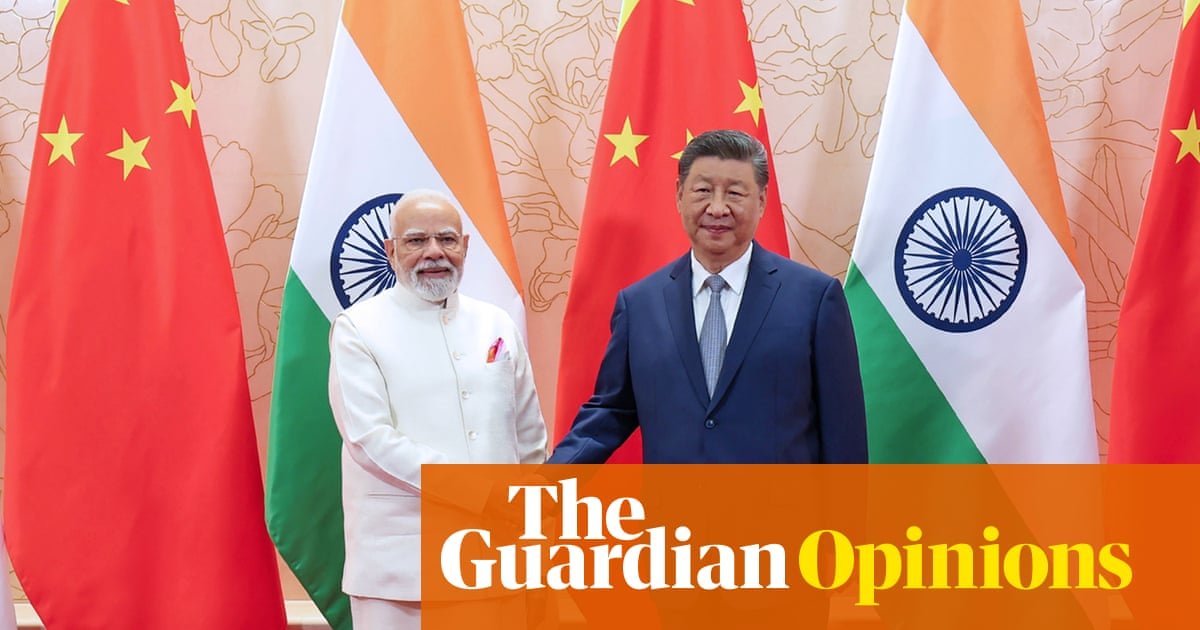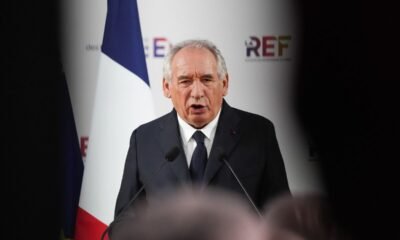Business
Celestica earnings blow past forecasts on AI demand

Under CEO Rob Mionis, Celestica is something it hasn’t been for years: a growth story.Fred Lum/The Globe and Mail
Celestica Inc. CLS-T continued in the second quarter to benefit from surging demand from tech giants engaged in a global arms race to build giant artificial intelligence-driven data centres, surpassing heightened market expectations.
The Toronto-based global manufacturing giant reported Monday after the market close that it generated US$2.89-billion of revenue in the quarter ended June 30, up 21 per cent from the same period a year earlier. It also reported adjusted earnings of US$1.39 per share, up 54 per cent, and net earnings of US$1.82 per share, up 128 per cent.
Celestica’s U.S.-listed shares jumped more than 10 per cent in after-market trading Monday after the stock closed at an all-time high of $238.07 on the Toronto Stock Exchange. The stock has appreciated by nearly 80 per cent this year and is up more than 15-fold since the end of 2022, giving the company a market capitalization of nearly $27-billion. That makes Celestica the fourth-most valuable technology company on the Toronto Stock Exchange.
Celestica came into the quarter expected to not only beat its own increased projections from April, but also recent analyst forecasts after exceeding their estimates for revenue and adjusted earnings in each of the past four quarters. It did so.
Revenues were about $200-million above the upper end of the company’s forecast revenue and analyst estimates, while its adjusted operating margin of 7.4 per cent was 20 basis points above its forecast. The company also raised its guidance for 2025, forecasting revenue of US$11.55-billion (up US$700-million from its increased forecast in April) and adjusted earnings per share of US$5.50, up from its prior US$5 forecast.
Analysts had widely expected Celestica to increase its forecast after doing so last quarter, and three times in each of the past two years. In addition, rivals Accton Technology Corp., Broadcom Inc. and Jabil Inc. recently reported financial results above expectations, and AI chip giant Nvidia Corp. recently surpassed US$4-trillion in stock market value.
Celestica, which supplies equipment to data centres and server farms that provide the computing power for AI models, has been on a tear since 2022, when OpenAI launched ChatGPT and kicked off the generative AI revolution.
The Canadian company is a key supplier to tech giant “hyperscalers” including Google, Meta Platforms and Amazon.com Inc. They have heavily upgraded computing capacity for AI development and are accelerating plans to do so: Google said last week it would make US$85-billion of capital expenditures this year, US$10-billion higher than previously forecast. Revenue from the Celestica segment which supplies the AI boom, increased by 28 per cent in the quarter to US$2.07-billion, accounting for 71.6 per cent of total company revenues.
“Celestica is benefiting from AI-driven data center expansion through its storage and networking produces, as well as servers for AI applications,” RBC Capital Markets analyst Paul Treiber said in a note to clients last week.
Celestica provides computing modules, network switches and data storage capacity for server farms, none of which is a straightforward manufacturing job. It incorporates custom silicon and has proprietary thermal and power management designs to help companies manage the extreme heat and electricity needed to run data centres.
Celestica was briefly a stock market darling a quarter century ago, after the former IBM division was purchased by Onex Corp. and spun out into a public company as dot-com mania heated up. (Onex sold out of its position in 2023, before most of the stock’s current run). Its stock soared as the company supplied fibre-optic cables and other equipment used to build out the internet.
But Celestica shares crashed amid the dot-com bust and remained in investor purgatory for two decades.
Chief executive Rob Mionis arrived in 2015 after the company had experienced years of losses, job cuts and shareholder lawsuits. The American-born private equity and aerospace industry veteran shifted Celestica’s orientation, moving it away from manufacturing low-margin products and competing on price to building more complex equipment that required engineering expertise. It improved its mix of customer segments with higher margin products in aerospace and defence, renewable energy, electric vehicle chargers and medical devices.
But the company’s coup was landing a lead position servicing tech giants as they built out data centres. Those relationships, forged before ChatGPT’s arrival, put the company in position to take off with the arrival of the generative AI wave that is now rapidly transforming the global economy, Mr. Mionis said in a 2023 interview.
Now, the company’s shares trade above its peers and at the high end of their 10-year range, and it is likely to maintain its premium valuation, Mr. Treiber wrote last week.
Business
The Guardian view on Donald Trump and India: the tariff war that boosted China | Editorial

Donald Trump’s imperial tendencies see the US president wield tariffs and sanctions in the expectation that America will receive tributes. Yet his latest move – punishing India with 50% tariffs for Russian oil purchases once encouraged by the US – has produced not submission but spectacle. It has sent India’s Narendra Modi to China for the first time in seven years as Xi Jinping hosted more than 20 leaders for the Shanghai Cooperation Organisation (SCO) summit in Tianjin. And it is in Tianjin, not Washington, where it looks as if the hinge of history is moving.
The SCO is easy to dismiss: the bloc is a bundle of contradictions. India and Pakistan remain adversaries. China and India still stare across a garrisoned Himalayan frontier, though relations have thawed since last October’s border breakthrough. Russia and China vie for influence in Central Asia. Unlike Nato, the SCO has no binding defence commitments. For much of its life, it has looked like a paper tiger, sending out communiques that were all roar and no bite.
But in geopolitics, appearances are important. To see Mr Modi, Mr Xi and Vladimir Putin smiling and joking is to watch Washington’s influence fade. Mr Trump’s tariff broadside against India makes Tianjin significant. Here was the prime minister of India – supposedly the US’s Asian counterweight to China – affirming that New Delhi and Beijing are “partners, not rivals”.
India’s calculation is straightforward. It has red lines: agriculture will not be opened up to US demands; oil purchases cannot be determined by Washington; the ceasefire with Pakistan was conceded by Islamabad, not brokered by Mr Trump. Backing down would look like weakness. Far better, from Mr Modi’s perspective, to demonstrate that the US cannot take India’s partnership for granted, and to seek friends elsewhere.
For China, the rewards are immediate. Mr Trump has given Mr Xi a stage on which to pose as the host of an important multipolar gathering. Cai Qi, Mr Xi’s chief of staff and a member of China’s top ruling body – the first to hold both roles since Mao’s era – was dispatched to meet Mr Modi, an unmistakable gesture of intimacy from China’s rulers. Beijing sees the SCO as emphasising the US’s absence and letting others seize the stage.
The implications stretch well beyond South Asia. For Moscow, every handshake in Tianjin underlines that sanctions have not made it a pariah. For Turkey, attendance preserves its ambiguity as a Nato member. For Iran, the SCO condemned the US-Israeli attacks it suffered this summer. The more this theatre normalises China and Russia as leaders of a non-western bloc, the harder it becomes for Washington to muster global consensus – notably over Ukraine – in future crises.
Nor was Tianjin just about Eurasia. A spat with the Philippines over Taiwan on the eve of the summit reminded delegates of China’s reddest lines. The SCO claims it is inclusive. But Beijing runs the show. Mr Trump sought a kowtow from Delhi. Instead, he has handed Beijing the platform for its long game – building a system beyond the reach of the US. Whether that would allow more room for other states to manoeuvre is moot. The SCO may never fight China’s wars, but it ensures Beijing will never stand alone. That is the high price the west may end up paying for Mr Trump’s narcissistic delusions.
Business
Cost of living giveaway event at Withernsea Leisure Centre

Residents struggling with the cost of living will be able to access free gifts and affordable produce at a community event in Withernsea.
East Riding of Yorkshire Council said its Help for Households drop-in event would also offer advice on saving money and staying warm.
The event is being held at the town’s leisure centre on Wednesday 25 September, from 10:00 BST to 15:00.
Councillor Nigel Wilkinson, the authority’s cabinet member for finance and governance, said: “We’re aware that many people across the East Riding are struggling with the ongoing cost of living crisis and are making active efforts to support those in need.”
The council said people could get advice on schemes available to help with heating costs ahead of autumn and winter, while eligible households can also get help with loft and cavity wall insulation.
The authority also said there would be affordable produce available to buy, a heated gilet giveaway and free SIM cards and mobile data.
There will also be advice on benefits available to residents on how to reduce bills.
Wilkinson added: “The council has already helped local residents to claim more than £3.8m in benefits in the past year.
”We highly encourage interested residents in Withernsea to attend the drop-in event and find out more about the support for which they may be eligible.”
Residents unable to attend can learn more about the support schemes available by contacting the council.
Business
Scotland scrapped peak rail fares

Mitchell LabiakBusiness reporter, BBC News
 Getty Images
Getty ImagesTrain passengers no longer have to pay higher prices for peak time tickets on ScotRail, raising the question over whether the rest of the UK could follow suit.
While some passengers told the BBC they would welcome the prospect of cheaper tickets, experts are divided over whether it could push prices up overall or result in overcrowded carriages.
Why do we have peak times?
The peak/off-peak system is designed to discourage passengers from getting on busier trains, by making it more expensive to travel during the commuter rush before 9am and between 5pm and 7pm.
However, the pandemic working from home and rail usage has not yet returned to pre-Covid levels so peak travel times are less busy than they used to be.
David Ross, chief operating officer at ScotRail, told Radio 4’s Today programme that this shift meant it could scrap peak charges as “there’s plenty of capacity for people to travel with us”.
Could peak charges be scrapped in the rest of the UK?
Unlike the Scottish system, English railways are run by a mix of publicly-owned firms and private contractors which the government has pledged to nationalise as their contracts end.
Ticket prices are set by the Department for Transport (DfT) so if the government wanted to scrap peak fares across England it could.
London North Eastern Railway (LNER), which is run by the government, is experimenting with the removal of off-peak charges across parts of its network – with the pilot due to end on 7 September.
The DfT has not said whether or not it would try removing off-peak charges across the whole English network, but it has said it wants to reform the way tickets are priced as it nationalises the system.
“We know the current labyrinth of fares and prices can be confusing, which is why we want to make it easier for passengers to find the right ticket for their journey,” a transport spokesperson said.
Meanwhile, Transport for Wales (TfW) and Translink operate the Welsh and Northern Irish railways and are run by their devolved governments.
The BBC has approached both TfW and Translink for comment.
Would it make ticket prices cheaper?
ScotRail’s move has reduced prices – an anytime day return ticket from Glasgow to Edinburgh has gone from £32.60 to £16.80.
ScotRail’s Ross said this means “passenger journeys will increase and over time it will pay for itself”, but rail experts are divided.
If passenger numbers remain the same ticket prices may need to go up overall to make up for the lost revenue, some have warned.
The other issue is what scrapping off-peak would mean for some already overcrowded routes.
“Clearly, the rush hour trains are already packed. And if you remove the disincentive to travel, it would mean more would want to travel on those trains,” said Bruce Williamson from campaign group Railfuture.
As such, he said any removal of peak charges would need to come alongside investment in increasing capacity of the rail network – something which would cost the government money.
‘I can’t afford to travel during peak times’

Elizabeth Wilson, 18, from Hull, is due to start a maths degree course at Newcastle University and believes ScotRail’s initiative should be “standard across the whole of the country”.
“There shouldn’t be a difference in price just because of when you travel. At the end of the day you’re doing the same journey, it shouldn’t matter what time you do that journey.”
Elizabeth says even with her 16-25 railcard “train fares are really expensive especially for students who don’t have much money”.
“I’m often having to wait until later so I can travel because I can’t afford to travel during peak times,” she adds.
She says the current cost of rail fares mean “you’re almost forced to buy a car because it’s much easier”.

Kara Smith, 23, from Leeds, works at Selfridges in Manchester and says she mainly drives to work because the peak time commute was “very expensive”.
“I used to see most of my wages going on train fares,” she says.
“I’d use the train more often if the fares were cheaper as it’s more convenient. But because of the prices it just makes more sense to drive.”

Mariama Bundu is from Newport in south Wales says she tends to travel at peak times and found the price “ridiculous”.
She spoke to the BBC at Paddington station in London where she was changing trains, having spent almost £200 on a return journey from Newport to Cambridge.
“Sometimes, I have to travel in first class because it’s difficult to get seats [in standard class during peak times],” she added.
Additional reporting by Pritti Mistry, Simon Browning and Emer Moreau
-

 Business3 days ago
Business3 days agoThe Guardian view on Trump and the Fed: independence is no substitute for accountability | Editorial
-
Tools & Platforms3 weeks ago
Building Trust in Military AI Starts with Opening the Black Box – War on the Rocks
-

 Ethics & Policy1 month ago
Ethics & Policy1 month agoSDAIA Supports Saudi Arabia’s Leadership in Shaping Global AI Ethics, Policy, and Research – وكالة الأنباء السعودية
-

 Events & Conferences3 months ago
Events & Conferences3 months agoJourney to 1000 models: Scaling Instagram’s recommendation system
-

 Jobs & Careers2 months ago
Jobs & Careers2 months agoMumbai-based Perplexity Alternative Has 60k+ Users Without Funding
-

 Funding & Business2 months ago
Funding & Business2 months agoKayak and Expedia race to build AI travel agents that turn social posts into itineraries
-

 Education2 months ago
Education2 months agoVEX Robotics launches AI-powered classroom robotics system
-

 Podcasts & Talks2 months ago
Podcasts & Talks2 months agoHappy 4th of July! 🎆 Made with Veo 3 in Gemini
-

 Podcasts & Talks2 months ago
Podcasts & Talks2 months agoOpenAI 🤝 @teamganassi
-

 Mergers & Acquisitions2 months ago
Mergers & Acquisitions2 months agoDonald Trump suggests US government review subsidies to Elon Musk’s companies






















